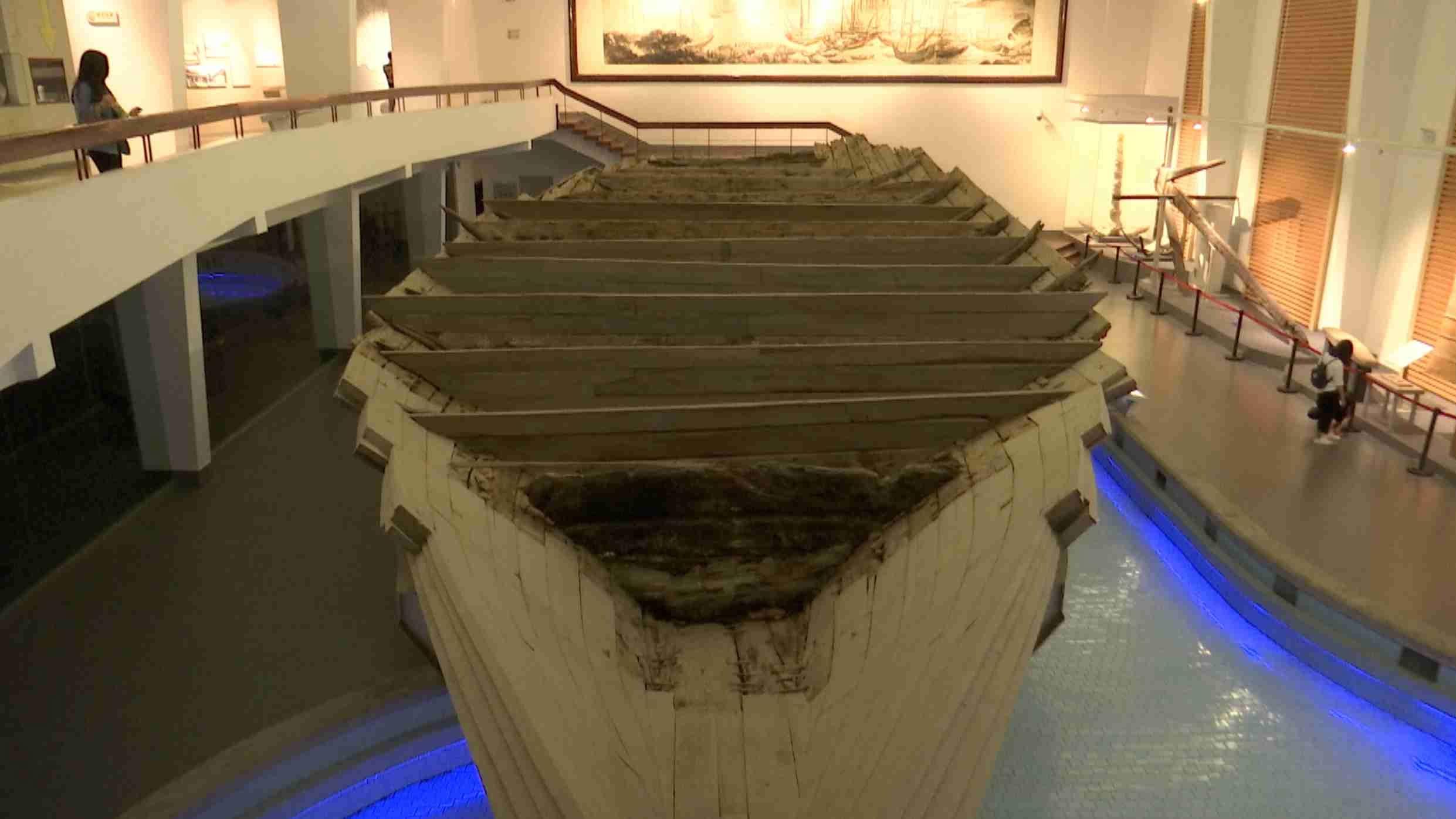By CGTN's Yang Chengxi
Fujian Province was one of the starting points of the ancient Maritime Silk Road. Along the province's coastline are small towns where people have traded with the outside world since around the Tang Dynasty.
Fujian’s coastline stretches 3,700 kilometers. Over the centuries, it gave birth to several of ancient China’s biggest port cities.
Stored in a temple in Fujian Province’s Quanzhou City are the remains of a commercial ship that sank at least seven centuries ago near one of the province’s major ports. It is a 24 meter long ship that carried spices, ceramics, fur and other items traders planned to sell to distant countries big and small.

Remains of a ship that sailed during the Song Dynasty. /CGTN Photo
“During the 10th to 14th century, when the Maritime Silk Road was at its height, Quanzhou City was the biggest hub in the orient and the eastern end of the silk road”, Quanzhou vice mayor Zhu Zhenping said.
In Quanzhou there are many museums and sites that are testament to how China's long history of trade brought forth a dynamic exchange of different goods and cultures. It is home to the oldest existing mosque in China, which is over 1,000 years old.

The Qing Jing mosque in Quanzhou City /CGTN Photo
Quanzhou’s officials have submitted applications to UNESCO this year for these places to become World Heritage Sites. “We are applying for 16 places in the city to be World Heritage Sites of 2018. These places relate to ancient Quanzhou’s cultural, trade, and maritime achievements”, said Zhu.
China aims to revive the Maritime Silk Road. That needs joint efforts from governments, businesses and citizens, and they have a huge tradition to honor.
1682km










